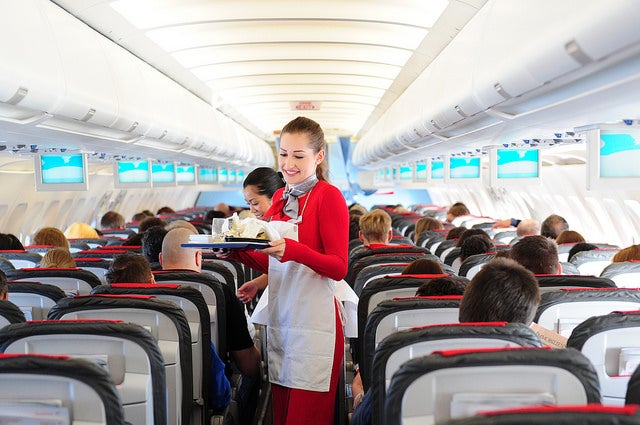Although each of us takes our favorite items with us on the plane , from ergonomic pillows to all kinds of electronic devices, there is one item that we should all make sure we have in our hand luggage. The compression socks .
The long flight hours are not only boring, they also hurt the blood circulation , with compression stockings giving the solution.
A team of doctors contacted by HuffPost analyze how they work as well as other tips for better blood vessel function during our travels .
Because they are important
“When we travel by air, we usually do not have much space to move. As a result, the blood becomes more stagnant, which can lead to thrombosis , “explains Dr. Vascular Surgeon at the UCHealth Vein and Vascular Surgery Center in Colorado Springs, Colorado . Scott N. Halbert .
“This prevents blood from accumulating in the legs, which is a risk factor for developing a blood clot, called Deep Vain Thrombosis (DVT) . The arteries carry oxygenated blood from the heart to all parts of the body while the veins work to carry blood back to the lungs for fresh oxygen. “Compression stockings help with this venous return.”
Deep vein thrombosis (DVT) refers to the formation of a thrombus in a deep vein in the leg. Deep vein thrombosis tends to occur in the veins of the legs, such as the femurs or iliac veins, as well as in the deep veins within the pelvis. If the clot comes off, it is called a piston and can reach the lungs, resulting in a pulmonary embolism. A piston other than a thrombus may also consist of a piece of fat or an air bubble (SOURCE: e-cardio.gr ).
“Another issue with air travel is dehydration, which can also cause blood clots,” he said. Scott N. Halbert. “There is also increased pressure in the veins, which can cause swelling.”
How do they work
“Compression stockings are helpful in reducing the risk of DVT as they mimic the function of the calf muscles, even when we are not walking,” says Dr. Michael Gow, an associate professor in vascular disease and surgery at Wexner Medical Center in Ohio State . University. “They also do good to prevent swelling of the legs after a long plane trip.”
Simply put, compression stockings put external pressure on our feet, which – as the name implies – compresses the veins and keeps the blood flowing.
“Gradual compression stockings can also be worn, which gently press on the ankles and calves, working against gravity and reducing the amount of blood that accumulates in their veins,” said Dr. Sachlin Nagrani , director of the Health Service. .
When should we wear them
“Large flights, especially those lasting four hours or more, pose a greater risk for the possibility of thrombosis,” says Dr. Sachlin Nagrani. “For people at increased risk of DVT, it is advisable to contact your personal doctor about compression stockings and other precautions.”
Dr. Scott N. Halbert notes that the risk of thrombosis during air travel is generally low, but increases as the time we spend in the air increases. That’s why he recommends wearing compression stockings for flights of more than four or five hours – especially if we have had swollen feet or blood clots in the past or have a family history of thrombosis.
What else can we do to prevent blood clots?
“The primary way to prevent DVT is to move, so if we are on a flight that lasts more than four hours, it is good to move our legs at regular intervals while sitting, as well as walking on the runway every two “to ensure better circulation,” says Dr. Sachlin Nagrani.
“The more we are able to activate the calf muscles, the better,” says Dr. Scott N. Halbert added, “Finger raising is an excellent exercise that does not require much space to do.”
Other ways to enhance good blood circulation during a flight include constant hydration and loose clothing.
Dr. Sachlin Nagrani even urges us to take care of ourselves even on days when we are not traveling. “In daily life, regular physical exercise, a healthy diet and avoiding the use of tobacco products will benefit us in countless ways, including preventing blood clots.”
More Read On: wpc16


